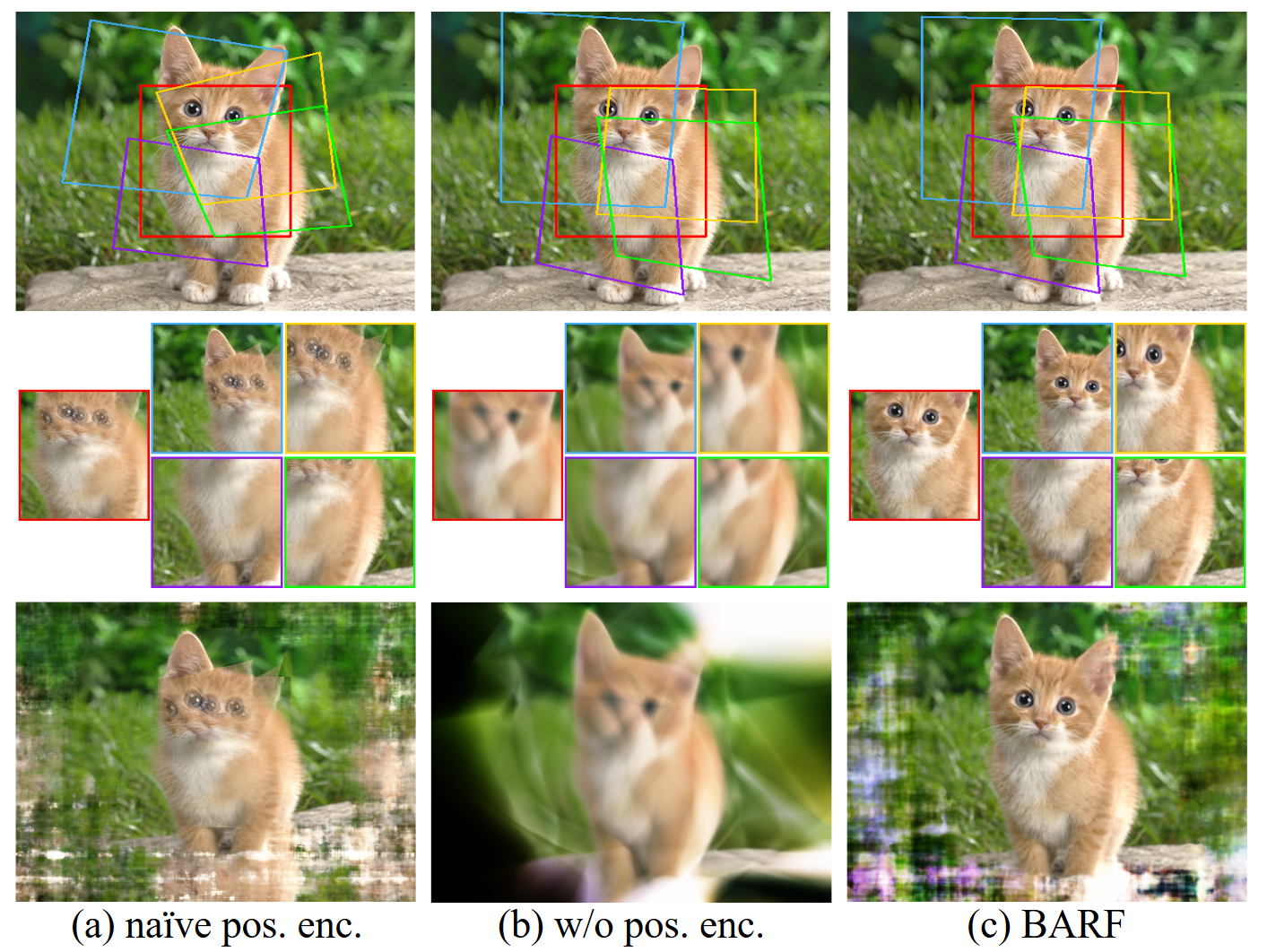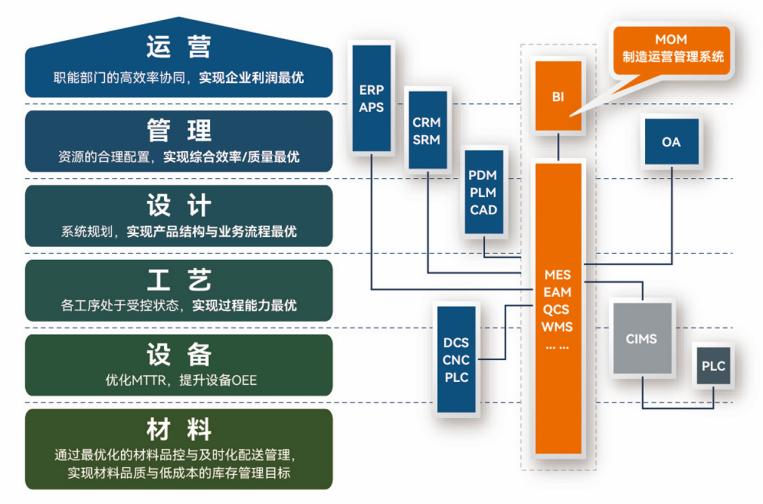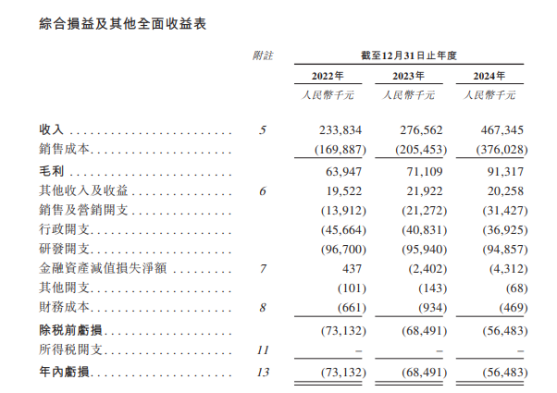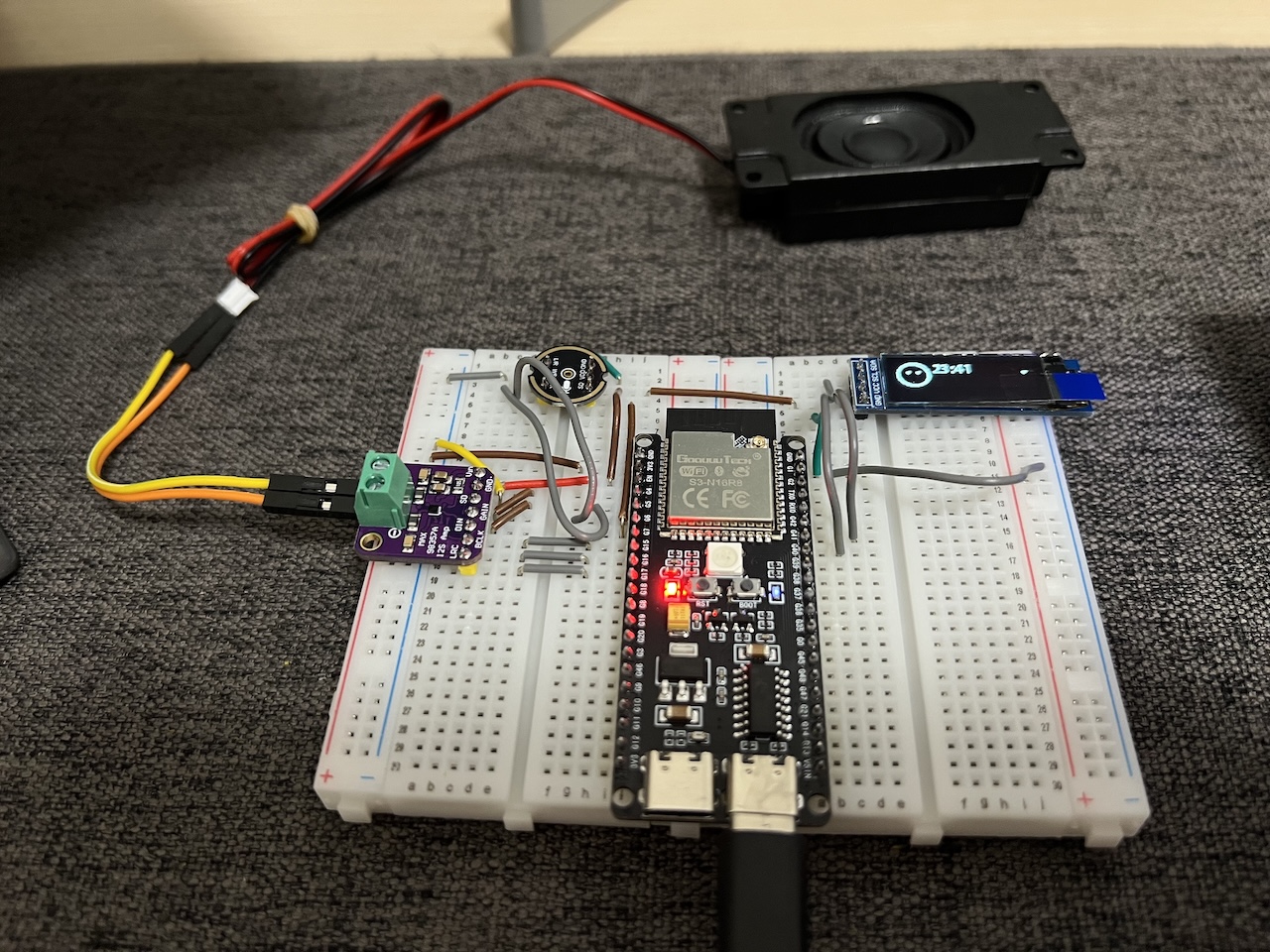stm32内部高速晶振打开作为主时钟
首先建议你别这么干,因为内部晶振特别容易受温度等外界影响,很容易卡死或堵死程序
我是因为没画外部晶振电路,所以只能开内部晶振来作为时钟
适用于stm32f103系列
把下面的代码换掉源文件里的时钟源配置
/* 开启HSI 即内部晶振时钟 */RCC->CR |= (uint32_t)0x00000001;
// RCC_DeInit();
// RCC_HSEConfig(RCC_HSE_ON); //使能内部时钟 HSI/*选择HSI为PLL的时钟源HSI必须2分频给PLL*/RCC->CFGR |= (uint32_t)RCC_CFGR_PLLSRC_HSI_Div2; /*PLLCLK=8/2*9=36MHz 设置倍频得到时钟源PLL的频率*/RCC->CFGR |= (uint32_t)RCC_CFGR_PLLMULL9;/* PLL不分频输出 */RCC->CFGR |= (uint32_t)RCC_CFGR_HPRE_DIV1;/* 使能 PLL时钟 */RCC->CR |= RCC_CR_PLLON;/* 等待PLL时钟就绪*/while((RCC->CR & RCC_CR_PLLRDY) == 0){}/* 选择PLL为系统时钟的时钟源 */RCC->CFGR &= (uint32_t)((uint32_t)~(RCC_CFGR_SW));RCC->CFGR |= (uint32_t)RCC_CFGR_SW_PLL; /* 等到PLL成为系统时钟的时钟源*/while ((RCC->CFGR & (uint32_t)RCC_CFGR_SWS) != (uint32_t)0x08){} 我的时钟配置文件
system_stm32f10x.c
/********************************************************************************* @file system_stm32f10x.c* @author MCD Application Team* @version V3.5.0* @date 11-March-2011* @brief CMSIS Cortex-M3 Device Peripheral Access Layer System Source File.* * 1. This file provides two functions and one global variable to be called from * user application:* - SystemInit(): Setups the system clock (System clock source, PLL Multiplier* factors, AHB/APBx prescalers and Flash settings). * This function is called at startup just after reset and * before branch to main program. This call is made inside* the "startup_stm32f10x_xx.s" file.** - SystemCoreClock variable: Contains the core clock (HCLK), it can be used* by the user application to setup the SysTick * timer or configure other parameters.* * - SystemCoreClockUpdate(): Updates the variable SystemCoreClock and must* be called whenever the core clock is changed* during program execution.** 2. After each device reset the HSI (8 MHz) is used as system clock source.* Then SystemInit() function is called, in "startup_stm32f10x_xx.s" file, to* configure the system clock before to branch to main program.** 3. If the system clock source selected by user fails to startup, the SystemInit()* function will do nothing and HSI still used as system clock source. User can * add some code to deal with this issue inside the SetSysClock() function.** 4. The default value of HSE crystal is set to 8 MHz (or 25 MHz, depedning on* the product used), refer to "HSE_VALUE" define in "stm32f10x.h" file. * When HSE is used as system clock source, directly or through PLL, and you* are using different crystal you have to adapt the HSE value to your own* configuration.* ******************************************************************************* @attention** THE PRESENT FIRMWARE WHICH IS FOR GUIDANCE ONLY AIMS AT PROVIDING CUSTOMERS* WITH CODING INFORMATION REGARDING THEIR PRODUCTS IN ORDER FOR THEM TO SAVE* TIME. AS A RESULT, STMICROELECTRONICS SHALL NOT BE HELD LIABLE FOR ANY* DIRECT, INDIRECT OR CONSEQUENTIAL DAMAGES WITH RESPECT TO ANY CLAIMS ARISING* FROM THE CONTENT OF SUCH FIRMWARE AND/OR THE USE MADE BY CUSTOMERS OF THE* CODING INFORMATION CONTAINED HEREIN IN CONNECTION WITH THEIR PRODUCTS.** <h2><center>© COPYRIGHT 2011 STMicroelectronics</center></h2>*******************************************************************************//** @addtogroup CMSIS* @{*//** @addtogroup stm32f10x_system* @{*/ /** @addtogroup STM32F10x_System_Private_Includes* @{*/#include "stm32f10x.h"/*** @}*//** @addtogroup STM32F10x_System_Private_TypesDefinitions* @{*//*** @}*//** @addtogroup STM32F10x_System_Private_Defines* @{*//*!< Uncomment the line corresponding to the desired System clock (SYSCLK)frequency (after reset the HSI is used as SYSCLK source)IMPORTANT NOTE:============== 1. After each device reset the HSI is used as System clock source.2. Please make sure that the selected System clock doesn't exceed your device'smaximum frequency.3. If none of the define below is enabled, the HSI is used as System clocksource.4. The System clock configuration functions provided within this file assume that:- For Low, Medium and High density Value line devices an external 8MHz crystal is used to drive the System clock.- For Low, Medium and High density devices an external 8MHz crystal isused to drive the System clock.- For Connectivity line devices an external 25MHz crystal is used to drivethe System clock.If you are using different crystal you have to adapt those functions accordingly.*/#if defined (STM32F10X_LD_VL) || (defined STM32F10X_MD_VL) || (defined STM32F10X_HD_VL)
/* #define SYSCLK_FREQ_HSE HSE_VALUE */#define SYSCLK_FREQ_24MHz 24000000
#else
/* #define SYSCLK_FREQ_HSE HSE_VALUE */
/* #define SYSCLK_FREQ_24MHz 24000000 */
/* #define SYSCLK_FREQ_36MHz 36000000 */
/* #define SYSCLK_FREQ_48MHz 48000000 */
/* #define SYSCLK_FREQ_56MHz 56000000 */
#define SYSCLK_FREQ_72MHz 72000000
#endif/*!< Uncomment the following line if you need to use external SRAM mountedon STM3210E-EVAL board (STM32 High density and XL-density devices) or on STM32100E-EVAL board (STM32 High-density value line devices) as data memory */
#if defined (STM32F10X_HD) || (defined STM32F10X_XL) || (defined STM32F10X_HD_VL)
/* #define DATA_IN_ExtSRAM */
#endif/*!< Uncomment the following line if you need to relocate your vector Table inInternal SRAM. */
/* #define VECT_TAB_SRAM */
#define VECT_TAB_OFFSET 0x0 /*!< Vector Table base offset field. This value must be a multiple of 0x200. *//*** @}*//** @addtogroup STM32F10x_System_Private_Macros* @{*//*** @}*//** @addtogroup STM32F10x_System_Private_Variables* @{*//*******************************************************************************
* Clock Definitions
*******************************************************************************/
#ifdef SYSCLK_FREQ_HSEuint32_t SystemCoreClock = SYSCLK_FREQ_HSE; /*!< System Clock Frequency (Core Clock) */
#elif defined SYSCLK_FREQ_24MHzuint32_t SystemCoreClock = SYSCLK_FREQ_24MHz; /*!< System Clock Frequency (Core Clock) */
#elif defined SYSCLK_FREQ_36MHzuint32_t SystemCoreClock = SYSCLK_FREQ_36MHz; /*!< System Clock Frequency (Core Clock) */
#elif defined SYSCLK_FREQ_48MHzuint32_t SystemCoreClock = SYSCLK_FREQ_48MHz; /*!< System Clock Frequency (Core Clock) */
#elif defined SYSCLK_FREQ_56MHzuint32_t SystemCoreClock = SYSCLK_FREQ_56MHz; /*!< System Clock Frequency (Core Clock) */
#elif defined SYSCLK_FREQ_72MHzuint32_t SystemCoreClock = SYSCLK_FREQ_72MHz; /*!< System Clock Frequency (Core Clock) */
#else /*!< HSI Selected as System Clock source */uint32_t SystemCoreClock = HSI_VALUE; /*!< System Clock Frequency (Core Clock) */
#endif__I uint8_t AHBPrescTable[16] = {0, 0, 0, 0, 0, 0, 0, 0, 1, 2, 3, 4, 6, 7, 8, 9};
/*** @}*//** @addtogroup STM32F10x_System_Private_FunctionPrototypes* @{*/static void SetSysClock(void);#ifdef SYSCLK_FREQ_HSEstatic void SetSysClockToHSE(void);
#elif defined SYSCLK_FREQ_24MHzstatic void SetSysClockTo24(void);
#elif defined SYSCLK_FREQ_36MHzstatic void SetSysClockTo36(void);
#elif defined SYSCLK_FREQ_48MHzstatic void SetSysClockTo48(void);
#elif defined SYSCLK_FREQ_56MHzstatic void SetSysClockTo56(void);
#elif defined SYSCLK_FREQ_72MHzstatic void SetSysClockTo72(void);
#endif#ifdef DATA_IN_ExtSRAMstatic void SystemInit_ExtMemCtl(void);
#endif /* DATA_IN_ExtSRAM *//*** @}*//** @addtogroup STM32F10x_System_Private_Functions* @{*//*** @brief Setup the microcontroller system* Initialize the Embedded Flash Interface, the PLL and update the * SystemCoreClock variable.* @note This function should be used only after reset.* @param None* @retval None*/
void SystemInit (void)
{
#ifdef USE_HSE_CLOCK /* Reset the RCC clock configuration to the default reset state(for debug purpose) *//* Set HSION bit */RCC->CR |= (uint32_t)0x00000001;/* Reset SW, HPRE, PPRE1, PPRE2, ADCPRE and MCO bits */
#ifndef STM32F10X_CLRCC->CFGR &= (uint32_t)0xF8FF0000;
#elseRCC->CFGR &= (uint32_t)0xF0FF0000;
#endif /* STM32F10X_CL */ /* Reset HSEON, CSSON and PLLON bits */RCC->CR &= (uint32_t)0xFEF6FFFF;/* Reset HSEBYP bit */RCC->CR &= (uint32_t)0xFFFBFFFF;/* Reset PLLSRC, PLLXTPRE, PLLMUL and USBPRE/OTGFSPRE bits */RCC->CFGR &= (uint32_t)0xFF80FFFF;#ifdef STM32F10X_CL/* Reset PLL2ON and PLL3ON bits */RCC->CR &= (uint32_t)0xEBFFFFFF;/* Disable all interrupts and clear pending bits */RCC->CIR = 0x00FF0000;/* Reset CFGR2 register */RCC->CFGR2 = 0x00000000;
#elif defined (STM32F10X_LD_VL) || defined (STM32F10X_MD_VL) || (defined STM32F10X_HD_VL)/* Disable all interrupts and clear pending bits */RCC->CIR = 0x009F0000;/* Reset CFGR2 register */RCC->CFGR2 = 0x00000000;
#else/* Disable all interrupts and clear pending bits */RCC->CIR = 0x009F0000;
#endif /* STM32F10X_CL */#if defined (STM32F10X_HD) || (defined STM32F10X_XL) || (defined STM32F10X_HD_VL)#ifdef DATA_IN_ExtSRAMSystemInit_ExtMemCtl(); #endif /* DATA_IN_ExtSRAM */
#endif /* Configure the System clock frequency, HCLK, PCLK2 and PCLK1 prescalers *//* Configure the Flash Latency cycles and enable prefetch buffer */SetSysClock();#ifdef VECT_TAB_SRAMSCB->VTOR = SRAM_BASE | VECT_TAB_OFFSET; /* Vector Table Relocation in Internal SRAM. */
#elseSCB->VTOR = FLASH_BASE | VECT_TAB_OFFSET; /* Vector Table Relocation in Internal FLASH. */
#endif
#else
/* 开启HSI 即内部晶振时钟 */RCC->CR |= (uint32_t)0x00000001;
// RCC_DeInit();
// RCC_HSEConfig(RCC_HSE_ON); //使能内部时钟 HSI/*选择HSI为PLL的时钟源HSI必须2分频给PLL*/RCC->CFGR |= (uint32_t)RCC_CFGR_PLLSRC_HSI_Div2; /*PLLCLK=8/2*9=36MHz 设置倍频得到时钟源PLL的频率*/RCC->CFGR |= (uint32_t)RCC_CFGR_PLLMULL9;/* PLL不分频输出 */RCC->CFGR |= (uint32_t)RCC_CFGR_HPRE_DIV1;/* 使能 PLL时钟 */RCC->CR |= RCC_CR_PLLON;/* 等待PLL时钟就绪*/while((RCC->CR & RCC_CR_PLLRDY) == 0){}/* 选择PLL为系统时钟的时钟源 */RCC->CFGR &= (uint32_t)((uint32_t)~(RCC_CFGR_SW));RCC->CFGR |= (uint32_t)RCC_CFGR_SW_PLL; /* 等到PLL成为系统时钟的时钟源*/while ((RCC->CFGR & (uint32_t)RCC_CFGR_SWS) != (uint32_t)0x08){}
#endif
}/*** @brief Update SystemCoreClock variable according to Clock Register Values.* The SystemCoreClock variable contains the core clock (HCLK), it can* be used by the user application to setup the SysTick timer or configure* other parameters.* * @note Each time the core clock (HCLK) changes, this function must be called* to update SystemCoreClock variable value. Otherwise, any configuration* based on this variable will be incorrect. * * @note - The system frequency computed by this function is not the real * frequency in the chip. It is calculated based on the predefined * constant and the selected clock source:* * - If SYSCLK source is HSI, SystemCoreClock will contain the HSI_VALUE(*)* * - If SYSCLK source is HSE, SystemCoreClock will contain the HSE_VALUE(**)* * - If SYSCLK source is PLL, SystemCoreClock will contain the HSE_VALUE(**) * or HSI_VALUE(*) multiplied by the PLL factors.* * (*) HSI_VALUE is a constant defined in stm32f1xx.h file (default value* 8 MHz) but the real value may vary depending on the variations* in voltage and temperature. * * (**) HSE_VALUE is a constant defined in stm32f1xx.h file (default value* 8 MHz or 25 MHz, depedning on the product used), user has to ensure* that HSE_VALUE is same as the real frequency of the crystal used.* Otherwise, this function may have wrong result.* * - The result of this function could be not correct when using fractional* value for HSE crystal.* @param None* @retval None*/
void SystemCoreClockUpdate (void)
{uint32_t tmp = 0, pllmull = 0, pllsource = 0;#ifdef STM32F10X_CLuint32_t prediv1source = 0, prediv1factor = 0, prediv2factor = 0, pll2mull = 0;
#endif /* STM32F10X_CL */#if defined (STM32F10X_LD_VL) || defined (STM32F10X_MD_VL) || (defined STM32F10X_HD_VL)uint32_t prediv1factor = 0;
#endif /* STM32F10X_LD_VL or STM32F10X_MD_VL or STM32F10X_HD_VL *//* Get SYSCLK source -------------------------------------------------------*/tmp = RCC->CFGR & RCC_CFGR_SWS;switch (tmp){case 0x00: /* HSI used as system clock */SystemCoreClock = HSI_VALUE;break;case 0x04: /* HSE used as system clock */SystemCoreClock = HSE_VALUE;break;case 0x08: /* PLL used as system clock *//* Get PLL clock source and multiplication factor ----------------------*/pllmull = RCC->CFGR & RCC_CFGR_PLLMULL;pllsource = RCC->CFGR & RCC_CFGR_PLLSRC;#ifndef STM32F10X_CL pllmull = ( pllmull >> 18) + 2;if (pllsource == 0x00){/* HSI oscillator clock divided by 2 selected as PLL clock entry */SystemCoreClock = (HSI_VALUE >> 1) * pllmull;}else{#if defined (STM32F10X_LD_VL) || defined (STM32F10X_MD_VL) || (defined STM32F10X_HD_VL)prediv1factor = (RCC->CFGR2 & RCC_CFGR2_PREDIV1) + 1;/* HSE oscillator clock selected as PREDIV1 clock entry */SystemCoreClock = (HSE_VALUE / prediv1factor) * pllmull; #else/* HSE selected as PLL clock entry */if ((RCC->CFGR & RCC_CFGR_PLLXTPRE) != (uint32_t)RESET){/* HSE oscillator clock divided by 2 */SystemCoreClock = (HSE_VALUE >> 1) * pllmull;}else{SystemCoreClock = HSE_VALUE * pllmull;}#endif}
#elsepllmull = pllmull >> 18;if (pllmull != 0x0D){pllmull += 2;}else{ /* PLL multiplication factor = PLL input clock * 6.5 */pllmull = 13 / 2; }if (pllsource == 0x00){/* HSI oscillator clock divided by 2 selected as PLL clock entry */SystemCoreClock = (HSI_VALUE >> 1) * pllmull;}else{/* PREDIV1 selected as PLL clock entry *//* Get PREDIV1 clock source and division factor */prediv1source = RCC->CFGR2 & RCC_CFGR2_PREDIV1SRC;prediv1factor = (RCC->CFGR2 & RCC_CFGR2_PREDIV1) + 1;if (prediv1source == 0){ /* HSE oscillator clock selected as PREDIV1 clock entry */SystemCoreClock = (HSE_VALUE / prediv1factor) * pllmull; }else{/* PLL2 clock selected as PREDIV1 clock entry *//* Get PREDIV2 division factor and PLL2 multiplication factor */prediv2factor = ((RCC->CFGR2 & RCC_CFGR2_PREDIV2) >> 4) + 1;pll2mull = ((RCC->CFGR2 & RCC_CFGR2_PLL2MUL) >> 8 ) + 2; SystemCoreClock = (((HSE_VALUE / prediv2factor) * pll2mull) / prediv1factor) * pllmull; }}
#endif /* STM32F10X_CL */ break;default:SystemCoreClock = HSI_VALUE;break;}/* Compute HCLK clock frequency ----------------*//* Get HCLK prescaler */tmp = AHBPrescTable[((RCC->CFGR & RCC_CFGR_HPRE) >> 4)];/* HCLK clock frequency */SystemCoreClock >>= tmp;
}/*** @brief Configures the System clock frequency, HCLK, PCLK2 and PCLK1 prescalers.* @param None* @retval None*/
static void SetSysClock(void)
{
#ifdef SYSCLK_FREQ_HSESetSysClockToHSE();
#elif defined SYSCLK_FREQ_24MHzSetSysClockTo24();
#elif defined SYSCLK_FREQ_36MHzSetSysClockTo36();
#elif defined SYSCLK_FREQ_48MHzSetSysClockTo48();
#elif defined SYSCLK_FREQ_56MHzSetSysClockTo56();
#elif defined SYSCLK_FREQ_72MHzSetSysClockTo72();
#endif/* If none of the define above is enabled, the HSI is used as System clocksource (default after reset) */
}/*** @brief Setup the external memory controller. Called in startup_stm32f10x.s * before jump to __main* @param None* @retval None*/
#ifdef DATA_IN_ExtSRAM
/*** @brief Setup the external memory controller. * Called in startup_stm32f10x_xx.s/.c before jump to main.* This function configures the external SRAM mounted on STM3210E-EVAL* board (STM32 High density devices). This SRAM will be used as program* data memory (including heap and stack).* @param None* @retval None*/
void SystemInit_ExtMemCtl(void)
{
/*!< FSMC Bank1 NOR/SRAM3 is used for the STM3210E-EVAL, if another Bank is required, then adjust the Register Addresses *//* Enable FSMC clock */RCC->AHBENR = 0x00000114;/* Enable GPIOD, GPIOE, GPIOF and GPIOG clocks */ RCC->APB2ENR = 0x000001E0;/* --------------- SRAM Data lines, NOE and NWE configuration ---------------*/
/*---------------- SRAM Address lines configuration -------------------------*/
/*---------------- NOE and NWE configuration --------------------------------*/
/*---------------- NE3 configuration ----------------------------------------*/
/*---------------- NBL0, NBL1 configuration ---------------------------------*/GPIOD->CRL = 0x44BB44BB; GPIOD->CRH = 0xBBBBBBBB;GPIOE->CRL = 0xB44444BB; GPIOE->CRH = 0xBBBBBBBB;GPIOF->CRL = 0x44BBBBBB; GPIOF->CRH = 0xBBBB4444;GPIOG->CRL = 0x44BBBBBB; GPIOG->CRH = 0x44444B44;/*---------------- FSMC Configuration ---------------------------------------*/
/*---------------- Enable FSMC Bank1_SRAM Bank ------------------------------*/FSMC_Bank1->BTCR[4] = 0x00001011;FSMC_Bank1->BTCR[5] = 0x00000200;
}
#endif /* DATA_IN_ExtSRAM */#ifdef SYSCLK_FREQ_HSE
/*** @brief Selects HSE as System clock source and configure HCLK, PCLK2* and PCLK1 prescalers.* @note This function should be used only after reset.* @param None* @retval None*/
static void SetSysClockToHSE(void)
{__IO uint32_t StartUpCounter = 0, HSEStatus = 0;/* SYSCLK, HCLK, PCLK2 and PCLK1 configuration ---------------------------*/ /* Enable HSE */ RCC->CR |= ((uint32_t)RCC_CR_HSEON);/* Wait till HSE is ready and if Time out is reached exit */do{HSEStatus = RCC->CR & RCC_CR_HSERDY;StartUpCounter++; } while((HSEStatus == 0) && (StartUpCounter != HSE_STARTUP_TIMEOUT));if ((RCC->CR & RCC_CR_HSERDY) != RESET){HSEStatus = (uint32_t)0x01;}else{HSEStatus = (uint32_t)0x00;} if (HSEStatus == (uint32_t)0x01){#if !defined STM32F10X_LD_VL && !defined STM32F10X_MD_VL && !defined STM32F10X_HD_VL/* Enable Prefetch Buffer */FLASH->ACR |= FLASH_ACR_PRFTBE;/* Flash 0 wait state */FLASH->ACR &= (uint32_t)((uint32_t)~FLASH_ACR_LATENCY);#ifndef STM32F10X_CLFLASH->ACR |= (uint32_t)FLASH_ACR_LATENCY_0;
#elseif (HSE_VALUE <= 24000000){FLASH->ACR |= (uint32_t)FLASH_ACR_LATENCY_0;}else{FLASH->ACR |= (uint32_t)FLASH_ACR_LATENCY_1;}
#endif /* STM32F10X_CL */
#endif/* HCLK = SYSCLK */RCC->CFGR |= (uint32_t)RCC_CFGR_HPRE_DIV1;/* PCLK2 = HCLK */RCC->CFGR |= (uint32_t)RCC_CFGR_PPRE2_DIV1;/* PCLK1 = HCLK */RCC->CFGR |= (uint32_t)RCC_CFGR_PPRE1_DIV1;/* Select HSE as system clock source */RCC->CFGR &= (uint32_t)((uint32_t)~(RCC_CFGR_SW));RCC->CFGR |= (uint32_t)RCC_CFGR_SW_HSE; /* Wait till HSE is used as system clock source */while ((RCC->CFGR & (uint32_t)RCC_CFGR_SWS) != (uint32_t)0x04){}}else{ /* If HSE fails to start-up, the application will have wrong clock configuration. User can add here some code to deal with this error */}
}
#elif defined SYSCLK_FREQ_24MHz
/*** @brief Sets System clock frequency to 24MHz and configure HCLK, PCLK2 * and PCLK1 prescalers.* @note This function should be used only after reset.* @param None* @retval None*/
static void SetSysClockTo24(void)
{__IO uint32_t StartUpCounter = 0, HSEStatus = 0;/* SYSCLK, HCLK, PCLK2 and PCLK1 configuration ---------------------------*/ /* Enable HSE */ RCC->CR |= ((uint32_t)RCC_CR_HSEON);/* Wait till HSE is ready and if Time out is reached exit */do{HSEStatus = RCC->CR & RCC_CR_HSERDY;StartUpCounter++; } while((HSEStatus == 0) && (StartUpCounter != HSE_STARTUP_TIMEOUT));if ((RCC->CR & RCC_CR_HSERDY) != RESET){HSEStatus = (uint32_t)0x01;}else{HSEStatus = (uint32_t)0x00;} if (HSEStatus == (uint32_t)0x01){
#if !defined STM32F10X_LD_VL && !defined STM32F10X_MD_VL && !defined STM32F10X_HD_VL /* Enable Prefetch Buffer */FLASH->ACR |= FLASH_ACR_PRFTBE;/* Flash 0 wait state */FLASH->ACR &= (uint32_t)((uint32_t)~FLASH_ACR_LATENCY);FLASH->ACR |= (uint32_t)FLASH_ACR_LATENCY_0;
#endif/* HCLK = SYSCLK */RCC->CFGR |= (uint32_t)RCC_CFGR_HPRE_DIV1;/* PCLK2 = HCLK */RCC->CFGR |= (uint32_t)RCC_CFGR_PPRE2_DIV1;/* PCLK1 = HCLK */RCC->CFGR |= (uint32_t)RCC_CFGR_PPRE1_DIV1;#ifdef STM32F10X_CL/* Configure PLLs ------------------------------------------------------*//* PLL configuration: PLLCLK = PREDIV1 * 6 = 24 MHz */ RCC->CFGR &= (uint32_t)~(RCC_CFGR_PLLXTPRE | RCC_CFGR_PLLSRC | RCC_CFGR_PLLMULL);RCC->CFGR |= (uint32_t)(RCC_CFGR_PLLXTPRE_PREDIV1 | RCC_CFGR_PLLSRC_PREDIV1 | RCC_CFGR_PLLMULL6); /* PLL2 configuration: PLL2CLK = (HSE / 5) * 8 = 40 MHz *//* PREDIV1 configuration: PREDIV1CLK = PLL2 / 10 = 4 MHz */ RCC->CFGR2 &= (uint32_t)~(RCC_CFGR2_PREDIV2 | RCC_CFGR2_PLL2MUL |RCC_CFGR2_PREDIV1 | RCC_CFGR2_PREDIV1SRC);RCC->CFGR2 |= (uint32_t)(RCC_CFGR2_PREDIV2_DIV5 | RCC_CFGR2_PLL2MUL8 |RCC_CFGR2_PREDIV1SRC_PLL2 | RCC_CFGR2_PREDIV1_DIV10);/* Enable PLL2 */RCC->CR |= RCC_CR_PLL2ON;/* Wait till PLL2 is ready */while((RCC->CR & RCC_CR_PLL2RDY) == 0){}
#elif defined (STM32F10X_LD_VL) || defined (STM32F10X_MD_VL) || defined (STM32F10X_HD_VL)/* PLL configuration: = (HSE / 2) * 6 = 24 MHz */RCC->CFGR &= (uint32_t)((uint32_t)~(RCC_CFGR_PLLSRC | RCC_CFGR_PLLXTPRE | RCC_CFGR_PLLMULL));RCC->CFGR |= (uint32_t)(RCC_CFGR_PLLSRC_PREDIV1 | RCC_CFGR_PLLXTPRE_PREDIV1_Div2 | RCC_CFGR_PLLMULL6);
#else /* PLL configuration: = (HSE / 2) * 6 = 24 MHz */RCC->CFGR &= (uint32_t)((uint32_t)~(RCC_CFGR_PLLSRC | RCC_CFGR_PLLXTPRE | RCC_CFGR_PLLMULL));RCC->CFGR |= (uint32_t)(RCC_CFGR_PLLSRC_HSE | RCC_CFGR_PLLXTPRE_HSE_Div2 | RCC_CFGR_PLLMULL6);
#endif /* STM32F10X_CL *//* Enable PLL */RCC->CR |= RCC_CR_PLLON;/* Wait till PLL is ready */while((RCC->CR & RCC_CR_PLLRDY) == 0){}/* Select PLL as system clock source */RCC->CFGR &= (uint32_t)((uint32_t)~(RCC_CFGR_SW));RCC->CFGR |= (uint32_t)RCC_CFGR_SW_PLL; /* Wait till PLL is used as system clock source */while ((RCC->CFGR & (uint32_t)RCC_CFGR_SWS) != (uint32_t)0x08){}}else{ /* If HSE fails to start-up, the application will have wrong clock configuration. User can add here some code to deal with this error */}
}
#elif defined SYSCLK_FREQ_36MHz
/*** @brief Sets System clock frequency to 36MHz and configure HCLK, PCLK2 * and PCLK1 prescalers. * @note This function should be used only after reset.* @param None* @retval None*/
static void SetSysClockTo36(void)
{__IO uint32_t StartUpCounter = 0, HSEStatus = 0;/* SYSCLK, HCLK, PCLK2 and PCLK1 configuration ---------------------------*/ /* Enable HSE */ RCC->CR |= ((uint32_t)RCC_CR_HSEON);/* Wait till HSE is ready and if Time out is reached exit */do{HSEStatus = RCC->CR & RCC_CR_HSERDY;StartUpCounter++; } while((HSEStatus == 0) && (StartUpCounter != HSE_STARTUP_TIMEOUT));if ((RCC->CR & RCC_CR_HSERDY) != RESET){HSEStatus = (uint32_t)0x01;}else{HSEStatus = (uint32_t)0x00;} if (HSEStatus == (uint32_t)0x01){/* Enable Prefetch Buffer */FLASH->ACR |= FLASH_ACR_PRFTBE;/* Flash 1 wait state */FLASH->ACR &= (uint32_t)((uint32_t)~FLASH_ACR_LATENCY);FLASH->ACR |= (uint32_t)FLASH_ACR_LATENCY_1; /* HCLK = SYSCLK */RCC->CFGR |= (uint32_t)RCC_CFGR_HPRE_DIV1;/* PCLK2 = HCLK */RCC->CFGR |= (uint32_t)RCC_CFGR_PPRE2_DIV1;/* PCLK1 = HCLK */RCC->CFGR |= (uint32_t)RCC_CFGR_PPRE1_DIV1;#ifdef STM32F10X_CL/* Configure PLLs ------------------------------------------------------*//* PLL configuration: PLLCLK = PREDIV1 * 9 = 36 MHz */ RCC->CFGR &= (uint32_t)~(RCC_CFGR_PLLXTPRE | RCC_CFGR_PLLSRC | RCC_CFGR_PLLMULL);RCC->CFGR |= (uint32_t)(RCC_CFGR_PLLXTPRE_PREDIV1 | RCC_CFGR_PLLSRC_PREDIV1 | RCC_CFGR_PLLMULL9); /*!< PLL2 configuration: PLL2CLK = (HSE / 5) * 8 = 40 MHz *//* PREDIV1 configuration: PREDIV1CLK = PLL2 / 10 = 4 MHz */RCC->CFGR2 &= (uint32_t)~(RCC_CFGR2_PREDIV2 | RCC_CFGR2_PLL2MUL |RCC_CFGR2_PREDIV1 | RCC_CFGR2_PREDIV1SRC);RCC->CFGR2 |= (uint32_t)(RCC_CFGR2_PREDIV2_DIV5 | RCC_CFGR2_PLL2MUL8 |RCC_CFGR2_PREDIV1SRC_PLL2 | RCC_CFGR2_PREDIV1_DIV10);/* Enable PLL2 */RCC->CR |= RCC_CR_PLL2ON;/* Wait till PLL2 is ready */while((RCC->CR & RCC_CR_PLL2RDY) == 0){}#else /* PLL configuration: PLLCLK = (HSE / 2) * 9 = 36 MHz */RCC->CFGR &= (uint32_t)((uint32_t)~(RCC_CFGR_PLLSRC | RCC_CFGR_PLLXTPRE | RCC_CFGR_PLLMULL));RCC->CFGR |= (uint32_t)(RCC_CFGR_PLLSRC_HSE | RCC_CFGR_PLLXTPRE_HSE_Div2 | RCC_CFGR_PLLMULL9);
#endif /* STM32F10X_CL *//* Enable PLL */RCC->CR |= RCC_CR_PLLON;/* Wait till PLL is ready */while((RCC->CR & RCC_CR_PLLRDY) == 0){}/* Select PLL as system clock source */RCC->CFGR &= (uint32_t)((uint32_t)~(RCC_CFGR_SW));RCC->CFGR |= (uint32_t)RCC_CFGR_SW_PLL; /* Wait till PLL is used as system clock source */while ((RCC->CFGR & (uint32_t)RCC_CFGR_SWS) != (uint32_t)0x08){}}else{ /* If HSE fails to start-up, the application will have wrong clock configuration. User can add here some code to deal with this error */}
}
#elif defined SYSCLK_FREQ_48MHz
/*** @brief Sets System clock frequency to 48MHz and configure HCLK, PCLK2 * and PCLK1 prescalers. * @note This function should be used only after reset.* @param None* @retval None*/
static void SetSysClockTo48(void)
{__IO uint32_t StartUpCounter = 0, HSEStatus = 0;/* SYSCLK, HCLK, PCLK2 and PCLK1 configuration ---------------------------*/ /* Enable HSE */ RCC->CR |= ((uint32_t)RCC_CR_HSEON);/* Wait till HSE is ready and if Time out is reached exit */do{HSEStatus = RCC->CR & RCC_CR_HSERDY;StartUpCounter++; } while((HSEStatus == 0) && (StartUpCounter != HSE_STARTUP_TIMEOUT));if ((RCC->CR & RCC_CR_HSERDY) != RESET){HSEStatus = (uint32_t)0x01;}else{HSEStatus = (uint32_t)0x00;} if (HSEStatus == (uint32_t)0x01){/* Enable Prefetch Buffer */FLASH->ACR |= FLASH_ACR_PRFTBE;/* Flash 1 wait state */FLASH->ACR &= (uint32_t)((uint32_t)~FLASH_ACR_LATENCY);FLASH->ACR |= (uint32_t)FLASH_ACR_LATENCY_1; /* HCLK = SYSCLK */RCC->CFGR |= (uint32_t)RCC_CFGR_HPRE_DIV1;/* PCLK2 = HCLK */RCC->CFGR |= (uint32_t)RCC_CFGR_PPRE2_DIV1;/* PCLK1 = HCLK */RCC->CFGR |= (uint32_t)RCC_CFGR_PPRE1_DIV2;#ifdef STM32F10X_CL/* Configure PLLs ------------------------------------------------------*//* PLL2 configuration: PLL2CLK = (HSE / 5) * 8 = 40 MHz *//* PREDIV1 configuration: PREDIV1CLK = PLL2 / 5 = 8 MHz */RCC->CFGR2 &= (uint32_t)~(RCC_CFGR2_PREDIV2 | RCC_CFGR2_PLL2MUL |RCC_CFGR2_PREDIV1 | RCC_CFGR2_PREDIV1SRC);RCC->CFGR2 |= (uint32_t)(RCC_CFGR2_PREDIV2_DIV5 | RCC_CFGR2_PLL2MUL8 |RCC_CFGR2_PREDIV1SRC_PLL2 | RCC_CFGR2_PREDIV1_DIV5);/* Enable PLL2 */RCC->CR |= RCC_CR_PLL2ON;/* Wait till PLL2 is ready */while((RCC->CR & RCC_CR_PLL2RDY) == 0){}/* PLL configuration: PLLCLK = PREDIV1 * 6 = 48 MHz */ RCC->CFGR &= (uint32_t)~(RCC_CFGR_PLLXTPRE | RCC_CFGR_PLLSRC | RCC_CFGR_PLLMULL);RCC->CFGR |= (uint32_t)(RCC_CFGR_PLLXTPRE_PREDIV1 | RCC_CFGR_PLLSRC_PREDIV1 | RCC_CFGR_PLLMULL6);
#else /* PLL configuration: PLLCLK = HSE * 6 = 48 MHz */RCC->CFGR &= (uint32_t)((uint32_t)~(RCC_CFGR_PLLSRC | RCC_CFGR_PLLXTPRE | RCC_CFGR_PLLMULL));RCC->CFGR |= (uint32_t)(RCC_CFGR_PLLSRC_HSE | RCC_CFGR_PLLMULL6);
#endif /* STM32F10X_CL *//* Enable PLL */RCC->CR |= RCC_CR_PLLON;/* Wait till PLL is ready */while((RCC->CR & RCC_CR_PLLRDY) == 0){}/* Select PLL as system clock source */RCC->CFGR &= (uint32_t)((uint32_t)~(RCC_CFGR_SW));RCC->CFGR |= (uint32_t)RCC_CFGR_SW_PLL; /* Wait till PLL is used as system clock source */while ((RCC->CFGR & (uint32_t)RCC_CFGR_SWS) != (uint32_t)0x08){}}else{ /* If HSE fails to start-up, the application will have wrong clock configuration. User can add here some code to deal with this error */}
}#elif defined SYSCLK_FREQ_56MHz
/*** @brief Sets System clock frequency to 56MHz and configure HCLK, PCLK2 * and PCLK1 prescalers. * @note This function should be used only after reset.* @param None* @retval None*/
static void SetSysClockTo56(void)
{__IO uint32_t StartUpCounter = 0, HSEStatus = 0;/* SYSCLK, HCLK, PCLK2 and PCLK1 configuration ---------------------------*/ /* Enable HSE */ RCC->CR |= ((uint32_t)RCC_CR_HSEON);/* Wait till HSE is ready and if Time out is reached exit */do{HSEStatus = RCC->CR & RCC_CR_HSERDY;StartUpCounter++; } while((HSEStatus == 0) && (StartUpCounter != HSE_STARTUP_TIMEOUT));if ((RCC->CR & RCC_CR_HSERDY) != RESET){HSEStatus = (uint32_t)0x01;}else{HSEStatus = (uint32_t)0x00;} if (HSEStatus == (uint32_t)0x01){/* Enable Prefetch Buffer */FLASH->ACR |= FLASH_ACR_PRFTBE;/* Flash 2 wait state */FLASH->ACR &= (uint32_t)((uint32_t)~FLASH_ACR_LATENCY);FLASH->ACR |= (uint32_t)FLASH_ACR_LATENCY_2; /* HCLK = SYSCLK */RCC->CFGR |= (uint32_t)RCC_CFGR_HPRE_DIV1;/* PCLK2 = HCLK */RCC->CFGR |= (uint32_t)RCC_CFGR_PPRE2_DIV1;/* PCLK1 = HCLK */RCC->CFGR |= (uint32_t)RCC_CFGR_PPRE1_DIV2;#ifdef STM32F10X_CL/* Configure PLLs ------------------------------------------------------*//* PLL2 configuration: PLL2CLK = (HSE / 5) * 8 = 40 MHz *//* PREDIV1 configuration: PREDIV1CLK = PLL2 / 5 = 8 MHz */RCC->CFGR2 &= (uint32_t)~(RCC_CFGR2_PREDIV2 | RCC_CFGR2_PLL2MUL |RCC_CFGR2_PREDIV1 | RCC_CFGR2_PREDIV1SRC);RCC->CFGR2 |= (uint32_t)(RCC_CFGR2_PREDIV2_DIV5 | RCC_CFGR2_PLL2MUL8 |RCC_CFGR2_PREDIV1SRC_PLL2 | RCC_CFGR2_PREDIV1_DIV5);/* Enable PLL2 */RCC->CR |= RCC_CR_PLL2ON;/* Wait till PLL2 is ready */while((RCC->CR & RCC_CR_PLL2RDY) == 0){}/* PLL configuration: PLLCLK = PREDIV1 * 7 = 56 MHz */ RCC->CFGR &= (uint32_t)~(RCC_CFGR_PLLXTPRE | RCC_CFGR_PLLSRC | RCC_CFGR_PLLMULL);RCC->CFGR |= (uint32_t)(RCC_CFGR_PLLXTPRE_PREDIV1 | RCC_CFGR_PLLSRC_PREDIV1 | RCC_CFGR_PLLMULL7);
#else /* PLL configuration: PLLCLK = HSE * 7 = 56 MHz */RCC->CFGR &= (uint32_t)((uint32_t)~(RCC_CFGR_PLLSRC | RCC_CFGR_PLLXTPRE | RCC_CFGR_PLLMULL));RCC->CFGR |= (uint32_t)(RCC_CFGR_PLLSRC_HSE | RCC_CFGR_PLLMULL7);#endif /* STM32F10X_CL *//* Enable PLL */RCC->CR |= RCC_CR_PLLON;/* Wait till PLL is ready */while((RCC->CR & RCC_CR_PLLRDY) == 0){}/* Select PLL as system clock source */RCC->CFGR &= (uint32_t)((uint32_t)~(RCC_CFGR_SW));RCC->CFGR |= (uint32_t)RCC_CFGR_SW_PLL; /* Wait till PLL is used as system clock source */while ((RCC->CFGR & (uint32_t)RCC_CFGR_SWS) != (uint32_t)0x08){}}else{ /* If HSE fails to start-up, the application will have wrong clock configuration. User can add here some code to deal with this error */}
}#elif defined SYSCLK_FREQ_72MHz
/*** @brief Sets System clock frequency to 72MHz and configure HCLK, PCLK2 * and PCLK1 prescalers. * @note This function should be used only after reset.* @param None* @retval None*/
static void SetSysClockTo72(void)
{__IO uint32_t StartUpCounter = 0, HSEStatus = 0;/* SYSCLK, HCLK, PCLK2 and PCLK1 configuration ---------------------------*/ /* Enable HSE */ RCC->CR |= ((uint32_t)RCC_CR_HSEON);/* Wait till HSE is ready and if Time out is reached exit */do{HSEStatus = RCC->CR & RCC_CR_HSERDY;StartUpCounter++; } while((HSEStatus == 0) && (StartUpCounter != HSE_STARTUP_TIMEOUT));if ((RCC->CR & RCC_CR_HSERDY) != RESET){HSEStatus = (uint32_t)0x01;}else{HSEStatus = (uint32_t)0x00;} if (HSEStatus == (uint32_t)0x01){/* Enable Prefetch Buffer */FLASH->ACR |= FLASH_ACR_PRFTBE;/* Flash 2 wait state */FLASH->ACR &= (uint32_t)((uint32_t)~FLASH_ACR_LATENCY);FLASH->ACR |= (uint32_t)FLASH_ACR_LATENCY_2; /* HCLK = SYSCLK */RCC->CFGR |= (uint32_t)RCC_CFGR_HPRE_DIV1;/* PCLK2 = HCLK */RCC->CFGR |= (uint32_t)RCC_CFGR_PPRE2_DIV1;/* PCLK1 = HCLK */RCC->CFGR |= (uint32_t)RCC_CFGR_PPRE1_DIV2;#ifdef STM32F10X_CL/* Configure PLLs ------------------------------------------------------*//* PLL2 configuration: PLL2CLK = (HSE / 5) * 8 = 40 MHz *//* PREDIV1 configuration: PREDIV1CLK = PLL2 / 5 = 8 MHz */RCC->CFGR2 &= (uint32_t)~(RCC_CFGR2_PREDIV2 | RCC_CFGR2_PLL2MUL |RCC_CFGR2_PREDIV1 | RCC_CFGR2_PREDIV1SRC);RCC->CFGR2 |= (uint32_t)(RCC_CFGR2_PREDIV2_DIV5 | RCC_CFGR2_PLL2MUL8 |RCC_CFGR2_PREDIV1SRC_PLL2 | RCC_CFGR2_PREDIV1_DIV5);/* Enable PLL2 */RCC->CR |= RCC_CR_PLL2ON;/* Wait till PLL2 is ready */while((RCC->CR & RCC_CR_PLL2RDY) == 0){}/* PLL configuration: PLLCLK = PREDIV1 * 9 = 72 MHz */ RCC->CFGR &= (uint32_t)~(RCC_CFGR_PLLXTPRE | RCC_CFGR_PLLSRC | RCC_CFGR_PLLMULL);RCC->CFGR |= (uint32_t)(RCC_CFGR_PLLXTPRE_PREDIV1 | RCC_CFGR_PLLSRC_PREDIV1 | RCC_CFGR_PLLMULL9);
#else /* PLL configuration: PLLCLK = HSE * 9 = 72 MHz */RCC->CFGR &= (uint32_t)((uint32_t)~(RCC_CFGR_PLLSRC | RCC_CFGR_PLLXTPRE |RCC_CFGR_PLLMULL));RCC->CFGR |= (uint32_t)(RCC_CFGR_PLLSRC_HSE | RCC_CFGR_PLLMULL9);
#endif /* STM32F10X_CL *//* Enable PLL */RCC->CR |= RCC_CR_PLLON;/* Wait till PLL is ready */while((RCC->CR & RCC_CR_PLLRDY) == 0){}/* Select PLL as system clock source */RCC->CFGR &= (uint32_t)((uint32_t)~(RCC_CFGR_SW));RCC->CFGR |= (uint32_t)RCC_CFGR_SW_PLL; /* Wait till PLL is used as system clock source */while ((RCC->CFGR & (uint32_t)RCC_CFGR_SWS) != (uint32_t)0x08){}}else{ /* If HSE fails to start-up, the application will have wrong clock configuration. User can add here some code to deal with this error */}
}
#endif/*** @}*//*** @}*//*** @}*/
/******************* (C) COPYRIGHT 2011 STMicroelectronics *****END OF FILE****/
相关文章:

stm32内部高速晶振打开作为主时钟
首先建议你别这么干,因为内部晶振特别容易受温度等外界影响,很容易卡死或堵死程序 我是因为没画外部晶振电路,所以只能开内部晶振来作为时钟 适用于stm32f103系列 把下面的代码换掉源文件里的时钟源配置 /* 开启HSI 即内部晶振时钟 */RCC…...

【分页查询】.NET开源 ORM 框架 SqlSugar 系列
.NET开源 ORM 框架 SqlSugar 系列 【开篇】.NET开源 ORM 框架 SqlSugar 系列【入门必看】.NET开源 ORM 框架 SqlSugar 系列【实体配置】.NET开源 ORM 框架 SqlSugar 系列【Db First】.NET开源 ORM 框架 SqlSugar 系列【Code First】.NET开源 ORM 框架 SqlSugar 系列【数据事务…...

【CSS in Depth 2 精译_061】9.4 CSS 中的模式库 + 9.5 本章小结
当前内容所在位置(可进入专栏查看其他译好的章节内容) 【第九章 CSS 的模块化与作用域】 ✔️ 9.1 模块的定义 9.1.1 模块和全局样式9.1.2 一个简单的 CSS 模块9.1.3 模块的变体9.1.4 多元素模块 9.2 将模块组合为更大的结构 9.2.1 模块中多个职责的拆分…...

惠普电脑切换默认F1至F12快捷键,FN切换
发现新买的惠普电脑,按F1至F12发现是快捷功能键,而按fnF1至F12才是windows的功能键和正常我自己使用的电脑刚好相反,实在太不方便了。 解决办法需要进入biso里面去把功能键模式选中给关掉,才能恢复回来...

计算机的错误计算(一百七十)
摘要 回复一中学生来信,探讨 MATLAB 关于算式 的计算问题。 在计算机的错误计算(一百三十二)中,我们探讨了手持式计算器关于算式 的计算问题。一中学生来信询问该算式在数学软件中是否会出错。 例1. 在 MATLAB 中计算 . 首…...

Python `async def` 函数中使用 `yield` 和 `return` 的区别
Python async def 函数中使用 yield 和 return 的区别 1. return 的使用示例代码输出结果解释 2. yield 的使用示例代码输出结果解释 3. 总结 在 Python 中,async def 函数用于定义异步函数,这些函数可以在执行过程中暂停和恢复,通常与 await…...

JAVA修饰符
JAVA 修饰符...

Java 单例模式:深度解析与应用
在软件开发领域,设计模式是解决常见设计问题的有效方案,而单例模式作为创建型设计模式中的一员,其重要性不容小觑。它能够确保一个类仅有一个实例,并提供全局访问点,这一特性在资源管理、配置信息读取、线程池管理以及…...

软件质量保证——单元测试之白盒技术
笔记内容及图片整理自XJTUSE “软件质量保证” 课程ppt,仅供学习交流使用,谢谢。 程序图 程序图定义 程序图P(V,E),V是节点的集合(节点是程序中的语句或语句片段),E是有向边的集合…...

Vue0-生命周期-03
生命周期 生命周期指定就是一个对象从创建到销毁的整个过程。 Vue也是有的 完整的Vue周期包含8个阶段。 Vue官方生命周期流程图: 那这有什么用呢?我们可以在指定阶段做特殊的事件。 这些方法伴随生命周期的进行自动执行。 <!DOCTYPE html> <…...

Flutter:页面滚动
1、单一页面,没有列表没分页的,推荐使用:SingleChildScrollView() return Scaffold(backgroundColor: Color(0xffF6F6F6),body: SingleChildScrollView(child: _buildView()) );2、列表没分页,如购物车页,每个item之间…...

【CameraPoseRefinement】以BARF为例介绍三维重建中的位姿优化
文章目录 IntroductionApproachPlanar Image Alignment(2D)Neural Radiance Fields (3D)Bundle-Adjusting Neural Radiance Fields Experiment平面图像对齐的定性实验合成场景上的定量实验 Introduction 在计算机视觉三维重建中,求解3D场景的表示和定位给定的相机帧…...

YOLO系列论文综述(从YOLOv1到YOLOv11)【第13篇:YOLOv10——实时端到端物体检测】
YOLOv10 1 摘要2 网络结构3 YOLOv1-v10对比 YOLO系列博文: 【第1篇:概述物体检测算法发展史、YOLO应用领域、评价指标和NMS】【第2篇:YOLO系列论文、代码和主要优缺点汇总】【第3篇:YOLOv1——YOLO的开山之作】【第4篇:…...

多数元素
多数元素 给定一个大小为 n 的数组 nums ,返回其中的多数元素。多数元素是指在数组中出现次数 大于 ⌊ n/2 ⌋ 的元素。 你可以假设数组是非空的,并且给定的数组总是存在多数元素。 示例 1: 输入:nums [3,2,3] 输出ÿ…...

EasyDSS视频推拉流技术的应用与安防摄像机视频采集参数
安防摄像机的视频采集参数对于确保监控系统的有效性和图像质量至关重要。这些参数不仅影响视频的清晰度和流畅度,还直接影响存储和网络传输的需求。 安防摄像机图像效果的好坏,由DSP处理器和图像传感器sensor决定,如何利用好已有的硬件资源&…...

在CentOS7上更换为阿里云源
在CentOS 7上更换为阿里云YUM源可以通过以下步骤进行: 备份当前的YUM源配置文件 sudo mv /etc/yum.repos.d/CentOS-Base.repo /etc/yum.repos.d/CentOS-Base.repo.backup 下载阿里云的YUM源配置文件 sudo curl -o /etc/yum.repos.d/CentOS-Base.repo http://mirr…...

小程序跳转到本页面并传参
const pages getCurrentPages(); const currentPage pages[pages.length - 1]; // 当前页面路由 const route currentPage.route; // 当前页面参数 const options currentPage.options;// 构建新的 URL 参数 const newOptions {...options,// newParam: newValue }; // 你…...

Vim操作
1. Vim的模式 2.正常模式->编辑模式 在上⽅插⼊⼀⾏: O在下⽅插⼊⼀⾏: o (open)在当前光标前插⼊: i在⾏⾸插⼊: I在当前光标后插⼊: a在⾏尾插⼊: A 3.常见命令行 1、拷贝当前行 yy ,拷贝当前行向下…...

金碟云星空-企微通知
需求背景: 通过企业微信,及时发送金碟云星空消息,比如流程异常、审批节点、等需要关注数据和信息点 需求目的: 及时告警、高响应、自动化 技能要求: 前后端开发工具的运用与开发,本实例使用IDEA 企业…...

Java中的运算符“instanceof“详解
在Java中,instanceof运算符用于检查一个对象是否是某个特定类的实例,或者是否实现了某个特定接口。它返回一个布尔值(true或false),用于在运行时进行类型检查。这在处理多态性时尤其有用,可以帮助我们确定对…...

JavaSec-RCE
简介 RCE(Remote Code Execution),可以分为:命令注入(Command Injection)、代码注入(Code Injection) 代码注入 1.漏洞场景:Groovy代码注入 Groovy是一种基于JVM的动态语言,语法简洁,支持闭包、动态类型和Java互操作性,…...

盘古信息PCB行业解决方案:以全域场景重构,激活智造新未来
一、破局:PCB行业的时代之问 在数字经济蓬勃发展的浪潮中,PCB(印制电路板)作为 “电子产品之母”,其重要性愈发凸显。随着 5G、人工智能等新兴技术的加速渗透,PCB行业面临着前所未有的挑战与机遇。产品迭代…...

以下是对华为 HarmonyOS NETX 5属性动画(ArkTS)文档的结构化整理,通过层级标题、表格和代码块提升可读性:
一、属性动画概述NETX 作用:实现组件通用属性的渐变过渡效果,提升用户体验。支持属性:width、height、backgroundColor、opacity、scale、rotate、translate等。注意事项: 布局类属性(如宽高)变化时&#…...

中南大学无人机智能体的全面评估!BEDI:用于评估无人机上具身智能体的综合性基准测试
作者:Mingning Guo, Mengwei Wu, Jiarun He, Shaoxian Li, Haifeng Li, Chao Tao单位:中南大学地球科学与信息物理学院论文标题:BEDI: A Comprehensive Benchmark for Evaluating Embodied Agents on UAVs论文链接:https://arxiv.…...

从深圳崛起的“机器之眼”:赴港乐动机器人的万亿赛道赶考路
进入2025年以来,尽管围绕人形机器人、具身智能等机器人赛道的质疑声不断,但全球市场热度依然高涨,入局者持续增加。 以国内市场为例,天眼查专业版数据显示,截至5月底,我国现存在业、存续状态的机器人相关企…...

基于Uniapp开发HarmonyOS 5.0旅游应用技术实践
一、技术选型背景 1.跨平台优势 Uniapp采用Vue.js框架,支持"一次开发,多端部署",可同步生成HarmonyOS、iOS、Android等多平台应用。 2.鸿蒙特性融合 HarmonyOS 5.0的分布式能力与原子化服务,为旅游应用带来…...

DIY|Mac 搭建 ESP-IDF 开发环境及编译小智 AI
前一阵子在百度 AI 开发者大会上,看到基于小智 AI DIY 玩具的演示,感觉有点意思,想着自己也来试试。 如果只是想烧录现成的固件,乐鑫官方除了提供了 Windows 版本的 Flash 下载工具 之外,还提供了基于网页版的 ESP LA…...
指令的指南)
在Ubuntu中设置开机自动运行(sudo)指令的指南
在Ubuntu系统中,有时需要在系统启动时自动执行某些命令,特别是需要 sudo权限的指令。为了实现这一功能,可以使用多种方法,包括编写Systemd服务、配置 rc.local文件或使用 cron任务计划。本文将详细介绍这些方法,并提供…...

Python如何给视频添加音频和字幕
在Python中,给视频添加音频和字幕可以使用电影文件处理库MoviePy和字幕处理库Subtitles。下面将详细介绍如何使用这些库来实现视频的音频和字幕添加,包括必要的代码示例和详细解释。 环境准备 在开始之前,需要安装以下Python库:…...

【OSG学习笔记】Day 16: 骨骼动画与蒙皮(osgAnimation)
骨骼动画基础 骨骼动画是 3D 计算机图形中常用的技术,它通过以下两个主要组件实现角色动画。 骨骼系统 (Skeleton):由层级结构的骨头组成,类似于人体骨骼蒙皮 (Mesh Skinning):将模型网格顶点绑定到骨骼上,使骨骼移动…...
